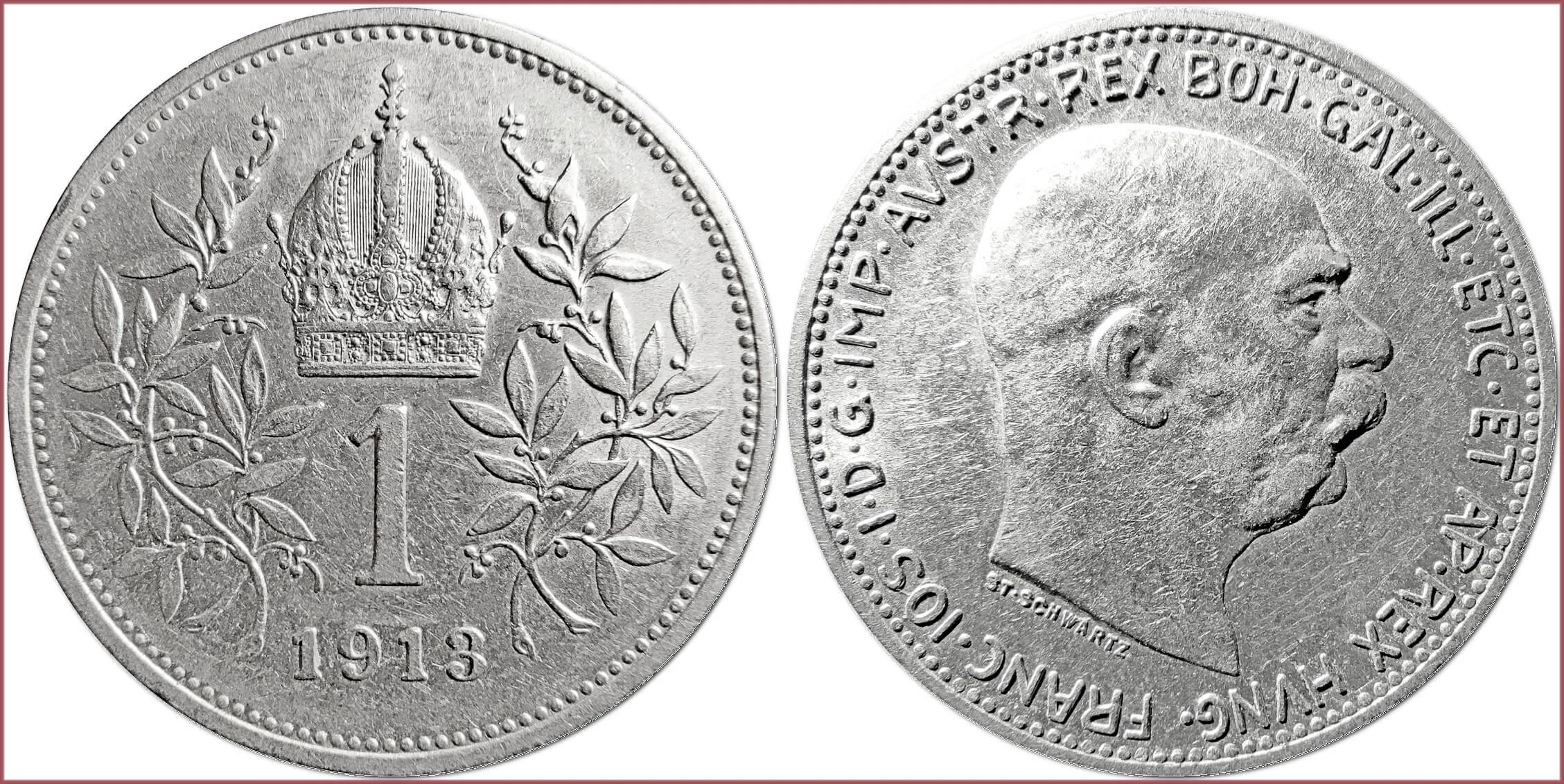CORONA: COIN OF AUSTRIA
1 corona, 1913: Austro-Hungarian Empire
Austro-Hungarian Empire or Austria-Hungary — constitutional monarchy and great state in Central Europe during 1867-1918 (was formed with the Austro-Hungarian Compromise).
Ruler: Franz Joseph I — Emperor of Austria, King of Hungary, and the other states of the Habsburg monarchy from 1848 until 1916. Starting from 1867, he was the ruler of the newly formed Austro-Hungarian Empire.
1 [corona]: the denomination of the coin is not explicitly indicated, only a numerical designation.
Luxurious floral ornament.
Imperial Crown of Austria — crown formerly in use by the monarchs of the Habsburg monarchy. The crown was made in 1602 in Prague as the personal crown of Holy Roman Emperor Rudolf II. It was used as a private crown of the Holy Roman Emperors and Kings of Hungary and Bohemia from the House of Habsburg. In 1804 it became the official crown of the newly constituted Austrian Empire. After 1867 — the imperial crown of the Austro-Hungarian Empire.
Design of the reverse of the coin: Anton Scharf and Andreas Neudeck.
FRANC IOS I D G IMP AVSTR REX BOH GAL ILL ETC ET AP REX HVNG: Franz Joseph I by the grace of God Emperor of Austria, King of Bohemia, Galicia, Illyria, etc and Apostolic King of Hungary.
Portrait of Franz Joseph I under which micro font is indicated the author of the portrait (design of the obverse of the coin) — Stefan Schwartz (inscription ST SCHWARTZ).
VIRIBVS VNITIS (embossed inscription on the edge of coin): the personal Latin motto of Emperor Franz Joseph I — "With united forces".
Vienna Mint.
Mintage: 9.345.000.
- Silver (0.835): 23 mm - 4.96 g
- Reference price: 6.5$
COIN CORONA — WHERE & WHEN (coins catalog: by names & emitents)
- AUSTRO-HUNGARIAN EMPIRE (1892-1916): corona = 100 heller (Austrian type of coins)
CORONA as coin name not well known to all numismatists in the world. The reason is that a coin with such denomination was not issued for a very long time (also, most coin catalogs indicate the denomination of these coins in the format Austro-Hungarian krone — not corona). What is the history of this name?
If you just use the Google Translate service and try to automatically determine the language, then this coin name is recognized as Latin. Literally translated from Latin, "corona" means "crown".
That is, this coin stands in the same row as the following names: crown, korona, koruna, krona, krone, kroon, króna. Each of the listed coins owes its name to the main plot: the image of the monarch's attribute of power — the royal crown.
First of all, corona in numismatics is an Austrian coin of the turn of the 19th and 20th centuries (as a type of Austro-Hungarian krone: next to the Hungarian type — korona). However, the most knowledgeable, advanced numismatists will also remember another corona — a gold coin of the Kingdom of Valencia (Spain, 16th century).











